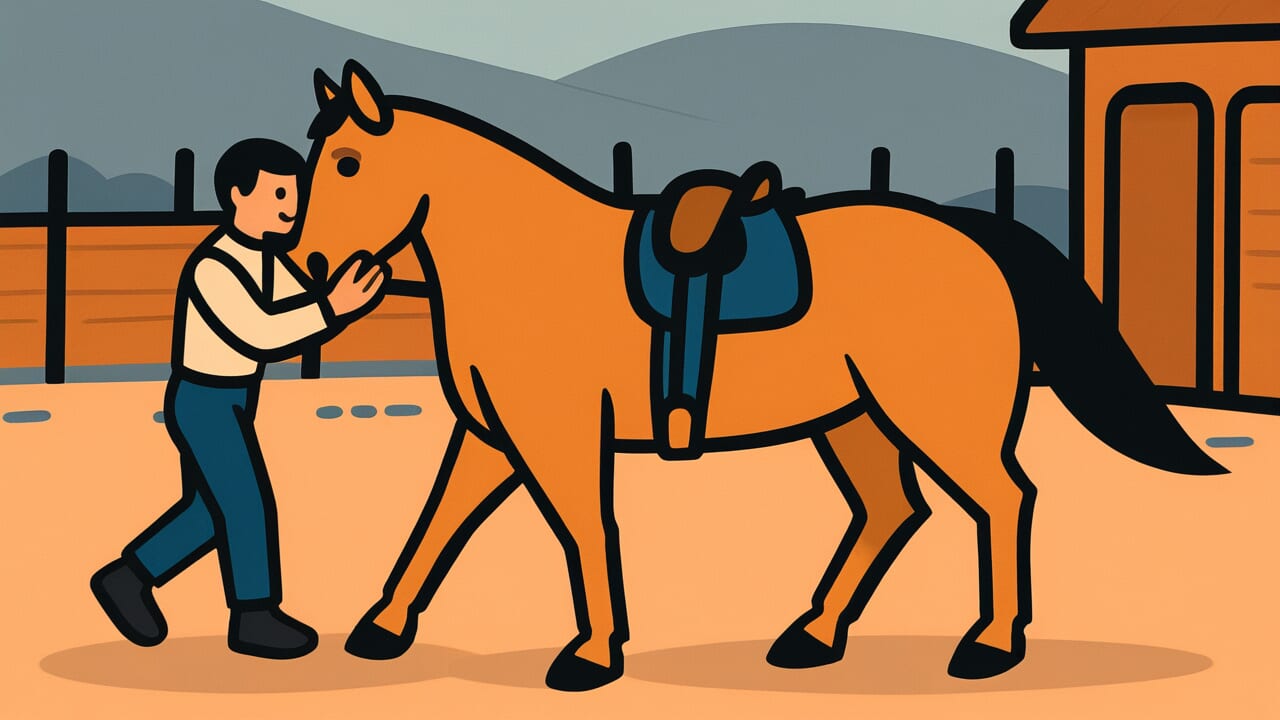How to Read “Training on a saddled horse”
Kurakake uma no keiko
Meaning of “Training on a saddled horse”
“Training on a saddled horse” means that skills truly become yours only through repeated practice of preparation and basic steps. This proverb teaches the importance of training.
Just as you must practice properly attaching a saddle before riding a horse, no skill can be mastered in one leap. Steady accumulation of basic practice builds real ability.
This proverb warns people who rush toward applications and results when learning something new. It reminds us that behind every brilliant achievement lies a plain preparation stage.
This teaching applies to all situations today. Sports practice, learning musical instruments, acquiring work skills—the list goes on.
This proverb tells us the importance of not neglecting basics. We must carefully master each step one by one.
Origin and Etymology
Unfortunately, no reliable records exist showing when this proverb first appeared in literature. However, we can guess its origins from the words themselves.
“Kurakake” means placing a saddle on a horse. Saddling a horse is the most basic step in preparing to ride. You cannot just jump on a horse—you must first master the technique of properly attaching the saddle.
If the saddle is not firmly secured, the rider risks falling off. The horse might also buck from discomfort.
Before the Edo period, horsemanship was an essential skill for samurai. But mastering it required step-by-step training. Attaching the saddle, handling the reins, maintaining posture on horseback—only through repeated practice of each basic movement did these skills become useful in real situations.
This proverb likely emerged from the importance of training in the martial arts world. Behind the glamorous image of skilled horseback riding lay steady preparation and repetitive practice.
This teaching is captured in the phrase “Training on a saddled horse.”
Usage Examples
- My piano teacher makes me do basic exercises all the time, but I’ll think of it as training on a saddled horse and work hard
- It might look like we’re only giving new employees boring tasks, but we’re drilling the basics into them—training on a saddled horse
Universal Wisdom
Behind the continued telling of “Training on a saddled horse” lies deep insight into human nature. We all have the desire to see results quickly and succeed immediately.
Steady preparation and repetitive practice feel boring. We want to skip them.
But our ancestors knew better. True ability does not develop overnight. Behind every skill that looks impressive lies the accumulation of plain basic work.
Someone who cannot properly attach a saddle cannot possibly control a horse freely.
This proverb shows a universal truth—growth has stages. The human learning process never changes, no matter the era.
If you skip basics and jump to applications, you will stumble somewhere. On the other hand, those who pile up steady preparation can demonstrate unshakable strength when it matters.
Our ancestors expressed this obvious but easily forgotten truth through the familiar example of horses and saddles. It is a gentle warning to impatient hearts.
At the same time, it encourages those who continue steady effort.
The heart seeking shortcuts and the heart desiring steady growth—this conflict continues to exist within humans across all ages.
When AI Hears This
Even if you practice riding on an unsaddled horse, you cannot ride a horse with a saddle attached. Cognitive science calls this phenomenon “context dependency.”
The human brain stores the learning situation together with the memory. When the situation changes, the skill suddenly becomes unusable.
What is interesting is that the greater the difference between practice and real environments, the more sharply the skill transfer rate drops.
One study showed that calculation skills learned in a quiet classroom dropped in accuracy by over 40 percent when used in a noisy factory.
Not just the physical difference of saddle presence, but multiple elements change simultaneously. The horse’s movement changes, the load on the body differs, the way to maintain balance shifts.
The brain judges “this is a different task.”
Even more surprising is that the more confident someone feels they “can do it,” the more dangerous it becomes.
A person who rides well on an unsaddled horse approaches a saddled horse with confidence. But inside the brain, a completely different motor program is needed.
This gap in perception becomes the biggest pitfall in learning. This proverb accurately points out the importance of making the practice environment close to the real situation.
Lessons for Today
What this proverb teaches you today is the value of not rushing and cherishing the basics. In an age when you see only others’ brilliant achievements on social media, this teaching gains more weight.
When you start something new, you feel anxious if results do not come quickly. But remember—every master started with repetition of basics.
The plain practice you are working on now is not wasted. It is building the foundation that will support your future self.
What matters is reframing basic practice. Do not see it as “a troublesome stage to pass through.” See it as “precious time to steadily build ability.”
Like repeatedly practicing careful saddle attachment, focus your awareness on each step. That accumulation will eventually become your unshakable confidence.
Rather than looking for shortcuts, advance one step at a time on the certain path. That attitude will ultimately take you fastest and highest.



Comments